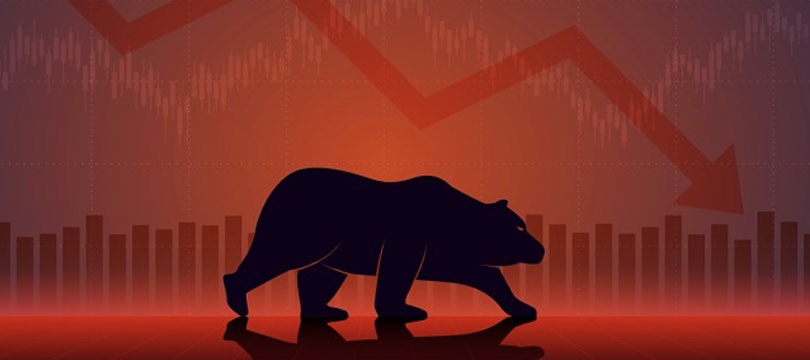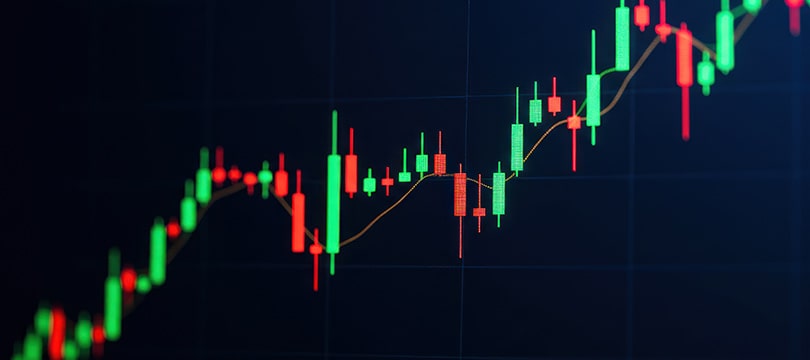Bear Market: What It Is and How to Navigate It
August 21, 2020

Bear Market is not a very frequent phenomenon, although a trader must face it multiple times throughout their career. The term is clearly English, and the literal translation does not suggest, at least at first glance, information about its meaning. Nevertheless, the Bear Market is subject to some misunderstandings, which can affect the quality of the individual trader's response.
The truth is that if you don't fully understand what is meant by Bear Market and the dynamics that drive it, it is really complicated for a Trader to cope with it and thus avoid the negative consequences that this phenomenon entails.
In this article, we offer a brief but exhaustive overview of the Bear Market, providing a clear definition and some advice that traders, both experienced and less experienced, can follow to limit the damage or even take advantage of the situation.
A definition of Bear Market
The expression "Bear Market" is often literally translated into Italian with the phrase "mercato orso". Most traders, however, tend to use the original expression.
Regardless of the lexical discourse, the Bear Market indicates a precise market condition, which occurs with a not excessive frequency but still able to alarm investors.
Some traders, especially the less experienced ones, believe that the term Bear Market simply means "market in a downward phase". In essence, when the market enters a downward trend, the Bear Market condition occurs.
This definition, in reality, is wrong or at least partial. It is not enough for a market to be in decline to be called a "Bear". It is necessary for it to take a further step, obviously in the direction of devaluation.
In reality, a Bear Market is defined as a market that loses at least 20% of its value within two months or more. We are talking, therefore, not only about a downward trend but, at the same time, a solid and deep trend.
It's obvious: a market that decreases for such a long time and in such a significant way can create imbalances and endanger the careers of many traders, or at least cause many losses and risks, however, we will talk about this in the next paragraph.
The pitfalls of the Bear Market
There are many pitfalls of the Bear Market, some of these develop in the short term, that is, immediately. Others, on the other hand, reveal themselves as such when the downward phase reaches its peak or is even exceeded.
In the immediate term, the biggest risk of the Bear Market is not revealing itself as such. In this case, traders believe or are led to believe that the devaluations of the prices are actually extemporary, rather than being part of a downward trend destined to soon change its direction. Based on these beliefs, these false evidences, traders risk opening a large number of failing positions, effectively losing a good chunk of their capital.
Then there is another risk, perhaps even more serious, certainly capable of generating lasting effects. The issue is as follows: if the market continues unabated its descent, investors may become convinced that the situation will last for a long time, an eventuality that is never entirely improbable. Here, then, an unjustified wave of sales is unleashed, caused not by the real performance of the assets but simply by a certain tendency to distrust. From here to real Panic Selling, the step is short.
The condition of Panic Selling is always a small catastrophe, as, even in the best-case scenario, all analysis activities are affected by the emotional component. In essence, the trailer during the Panic Selling phase, even if they managed to keep a cool head, would find themselves trading almost blindly.
Fortunately, Panic Selling is never destined to last long. It can be compared to a sudden feverish state, an disproportionate reaction to an event that is negative but not necessarily catastrophic. In the short time it has at its disposal, however, Panic Selling can claim many victims and cause a lot of damage. It very often all starts from a Bear Market condition.
What to do during the Bear Market
How to behave during the Bear Market? How to limit the damage, defend yourself from the negative consequences and, if possible, even exploit the situation to your advantage?
There are some approaches that can be put in place to achieve this goal, although it is never easy to emerge unscathed from a market in these conditions, even if you knew the most suitable techniques to deal with it.
In any case, here are three tips for effectively dealing with the Bear Market.
Investing downwards with CFDs
Some instruments allow you to invest downwards, that is, to earn even when prices are falling, regardless of the speed at which they are doing so. Generally, all derivative products that use falling assets as underlying assets are useful for this purpose.
The most used derivative products at the moment are CFDs, i.e. Contracts for Difference. They are over-the-counter instruments, therefore they are not part of a regulated market. By virtue of this, however, they are also flexible and moderately customizable.
Thanks to CFDs it is possible to open short positions, which allow the trader to earn exactly when the asset (which, it is good to remember, in this case acts as an underlying asset and not as a real asset) devalues. A positive feature of CFDs is that they are generally not subject to high commissions, unlike what can happen for futures, which represent the regulated variant. Among other things, CFDs are quite available, as most retail brokers make them available.
Waiting
It may seem like strange advice, which goes against the very interest of traders. Sitting idle, not trading... How can it be a solution to a strange and dangerous condition like that of the Bear Market?
Actually, perhaps, it is the wisest advice among the many you will hear. It's true, when the going gets tough, the tough get going. If, however, the game is too tough then it's best to get out of it, give up the contest, suspend your commitment to trading. It's a suspension, not an interruption, let alone an abandonment. It doesn't mean throwing in the towel, but simply waiting for better times.
After all, this is the figure that separates a normal trader from an expert or successful trader: the ability to recognize their limits, to understand how far their skills go, to sense when their knowledge is not sufficient to face a given danger.
Indeed, the Bear Market is one of the most difficult market conditions for a trader. Also because, ultimately, it is a stabilization of the downward trend. It goes without saying that in this situation it is really complicated for an investor to understand when dawn comes, when the downward trend will finally give way to a more or less constant increase in prices.
Therefore, if the Bear Market scares you and you have the impression of not being able to face the situation, simply... Stop. Wait for better times.
Buy and aim for the long term.
Although the Bear Market poses difficult obstacles to overcome, it can still be exploited to one's advantage. It's good to put your hands forward: it's not at all simple, on the contrary, those who attempt it very often get burned. Many experienced traders, however, are able to earn, indeed to make real fortunes precisely starting from Bear Market situations, that is, when assets produce a constant and deep downward trend.
How is it possible to earn, and earn a lot, from the Bear Market? In theory, there is a very simple approach to understand and that can be effective, if certain specific conditions are met.
The reference is to long-term trading, that is to an approach that requires the investor to reap the fruits of their commitment in a not exactly near future. From this perspective, one can also speak of months, not infrequently of a couple of years. The truth is that the market tends to behave cyclically, it can happen that deep and constant downward periods are followed by equally deep and constant upward trends.
It is worth, therefore, aiming at generating a surplus of very large dimensions, precisely starting from Bear Market conditions. It is a matter of buying during a period of declines, possibly at the negative peak, and aiming straight at the long term, selling when the future upward trend has in turn reached its peak.
It is a matter of timing and forecasting skills, two elements that not all traders are able to handle with precision.




